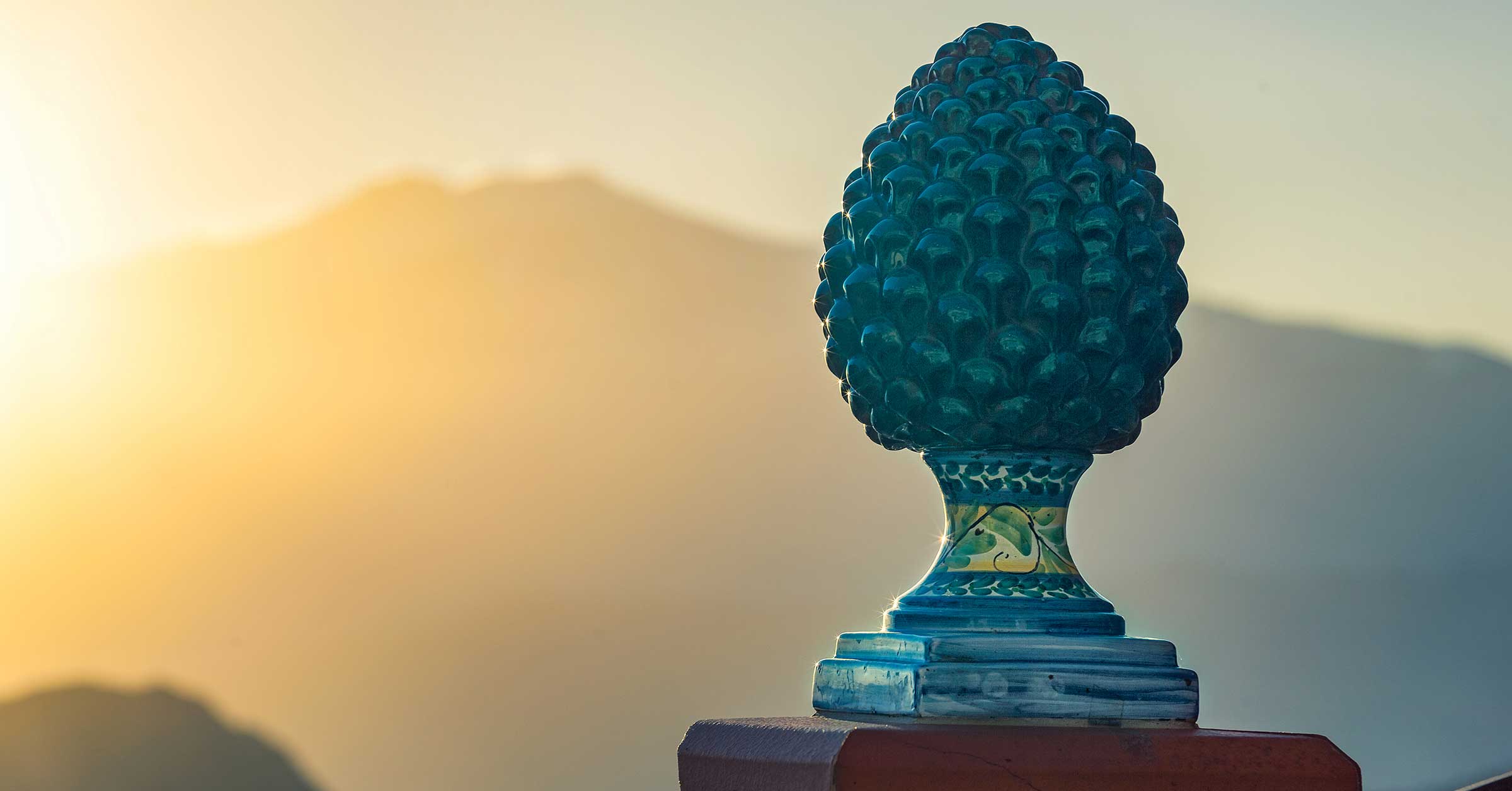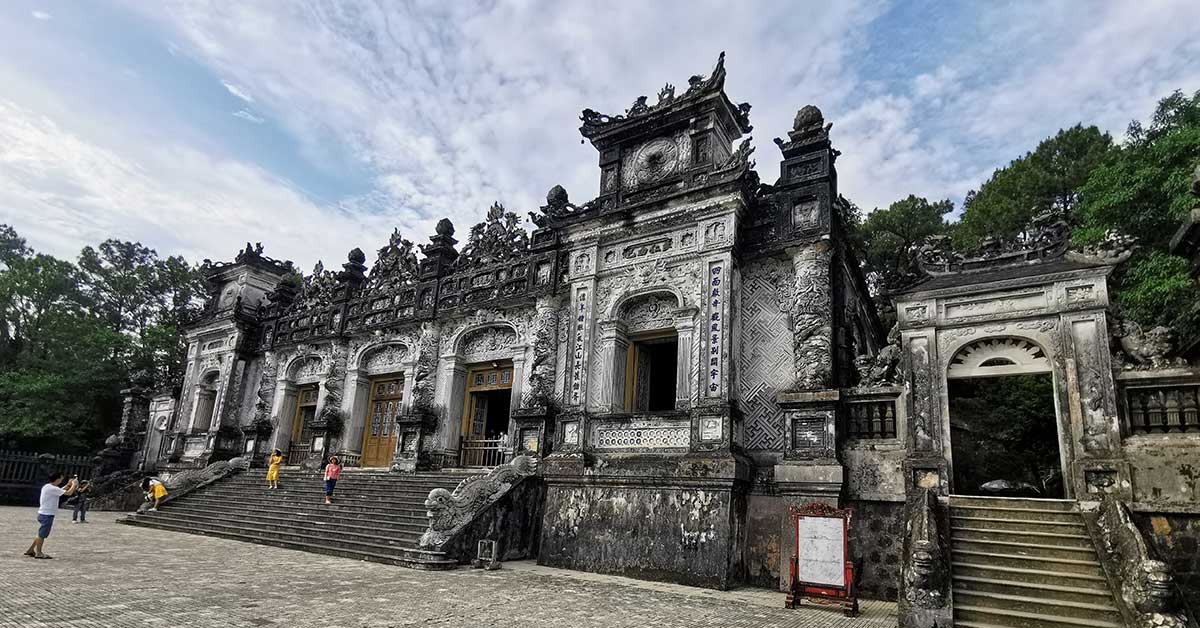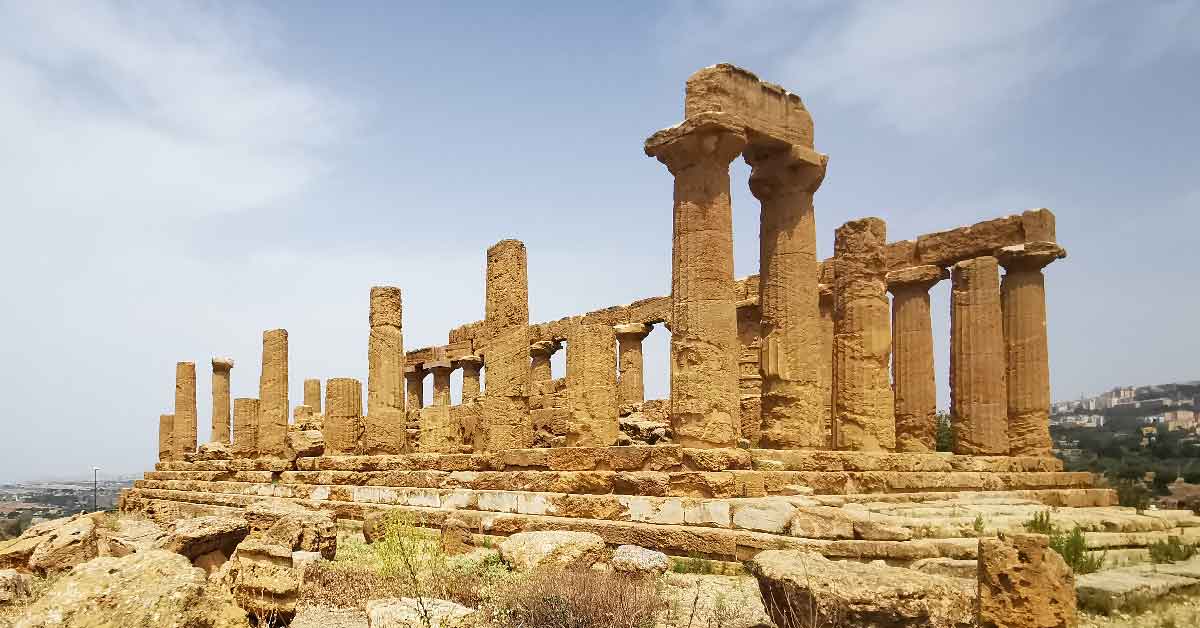Sicily or Sardinia: Which Italian Island Paradise Is Right for You?
Planning for a trip to the south of Italy and don’t know which island to choose? Should it be Sicily or Sardinia (or both)? I mean, yes, it’s a pretty hard choice, considering both Mediterranean islands are pretty charming summer destinations.
Both floating over the Mediterranean, the two irresistible islands of Sardinia and Sicily, are drawing waves of tourists with their sunny coastlines, old ruins, and great hiking landscapes, perfect for warm summer vacations.
Some people even mix them up! Sicily (Sicilia) and Sardinia (Sardegna) do sound somewhat similar, especially to non-Italian speakers. Adding to the confusion is their geographical closeness, coupled with both being renowned holiday hotspots famous for stunning beaches and being the two largest islands belonging to the same nation, Italy.
But once you learn more about them, you just realise they are SO different.
Off the toe of Italy’s boot-shaped peninsula lies Sicily, the larger of the two islands. It is positioned closest to the Italian mainland. Its culture and architecture have been shaped and reshaped by multiple rulers from Greeks to Normans and beyond, as its rolling hills covered in olive groves and vineyards have been dramatically carved by volcanoes such as Mount Etna.
Meanwhile, Sardinia is found more to the west, nearer to the French island of Corsica. Unlike Sicily, Sardinia’s culture has been less affected by outside influences. Stunning beaches and the high end resorts of Costa Esmeralda, along with the mysterious, prehistoric Nuragic complexes lost in unspoiled forested landscapes and a rustic cuisine, create an epic setting for a more laid-back vacation.
So let’s get into details.
Disclosure: This article contains affiliate links. If you make a purchase after clicking one of these links, I earn a small commission from that website at no extra cost to you. Learn more: Disclosure policy.
 Sicily vs Sardinia. An Overview.
Sicily vs Sardinia. An Overview.
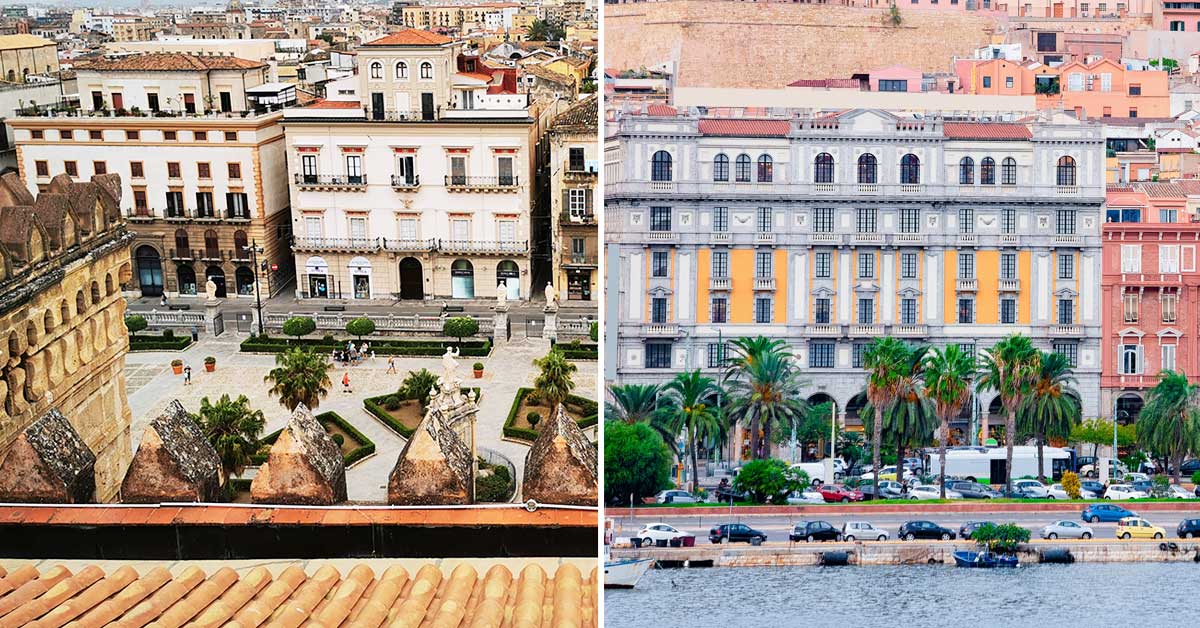
Palermo & Cagliari
Having trouble deciding between Sardinia and Sicily? Well, who wouldn’t? Both warm destinations, but each with its unique architecture, beaches and cuisine.
Sicily
Sardinia
Cultural attractions
Rich in Greek, Norman, and Baroque heritage with historical cities like Palermo and Syracuse.
Unique Nuragic culture with ancient ruins like Su Nuraxi.
Beaches
Stunning beaches like Cefalù and San Vito Lo Capo.
Famous for some of the best beaches in Italy, such as Costa Smeralda and La Pelosa.
Landscapes
Mount Etna, Europe’s largest active volcano, and varied landscapes from rolling hills covered in citrus and olive trees to coastal plains.
Rugged mountains and serene, forested countryside, ideal for nature lovers and hikers.
Atmosphere
Dynamic nightlife and markets, plenty for sightseeing, multicultural.
Laid back, calm, pristine, traditional.
Festivals & Events
A blend of religious, historical, and cultural celebrations with diverse heritage: local saints, harvests, performing arts.
Deeply traditional, focusing on its unique folklore, music, and customs. Horse races and parades are common since ancient times.
Cuisine
Famous for street food: arancini, pane e panelle etc, sweet cannoli and Modica chocolate, fresh seafood, ancient markets and harvest festivals. Better for vegetarians.
More rustic, meat-based, focused on pastoral ingredients. For the seafood, lobsters in the North, mussels and eels in the South. Cannonau wine renowned for its potential to enhance lifespan.
Accommodation
Restored palaces and villas, inside the cities or overlooking the sea. Agritourism in the rolling hills.
Known for modern, high-end resorts such as Hyatt and world class services in the coastal regions.
 Climate
Climate
Both Sicily and Sardinia have a Mediterranean climate, characterized by hot, dry summers and mild, wet winters. Subtle differences are generated mainly by topographical variations.
In summer, temperatures are often exceeding 30°C (86°F). For both, coastal areas enjoy sea breeze (recommended: Costa Esmeralda – Sardinia or San Vito Lo Capo Beach, Trapani – Sicily). But Sicily, particularly in the inland areas (Valley of the Temples, Agrigento), tends to experience slightly higher temperature extremes, due to its more southerly latitude and the presence of Mount Etna.
In winter, in Sicily the weather is mild, with rainfall, especially from November to February. Coastal areas rarely see temperatures drop below 10°C (50°F), while inland and mountainous areas are a bit cooler. Compared to that Sardinia experiences slightly more rainfall, especially in the mountainous regions.
Spring and autumn are the ideal seasons for sightseeing and outdoor activities in Sicily, as well as in Sardinia.
Winner for best climate: Both.
 Atmosphere
Atmosphere
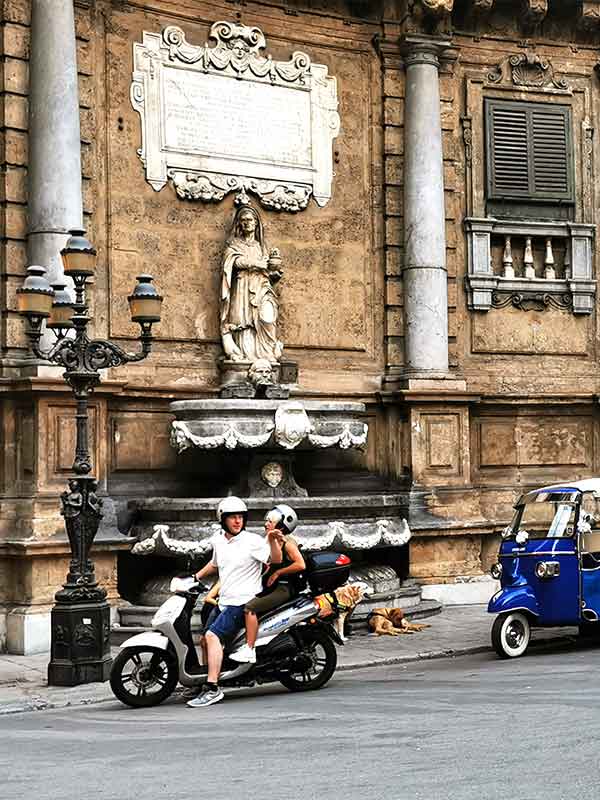
Quattro Canti, Palermo, Copyright © Cooltourismical.com
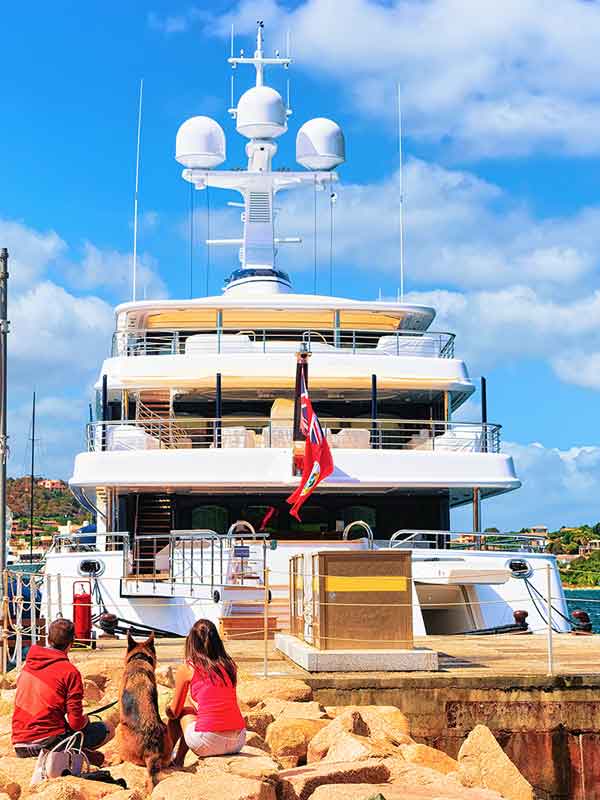
Costa Smeralda, Sardinia, Source: Roman Babakin| Freepik
Sicily
By being a melting pot of civilizations, Sicily has a vibrant atmosphere. With a backdrop abundant in so many different architectural styles, its urban areas, such as Palermo and Catania, buzz with the energy of busy markets, a lively street food scene, and unbelievable nightlife. It is an amazing place for socializing, sightseeing and beach getaways.
Read more: Reasons why Palermo is worth visiting.
Sardinia
On the other hand, Sardinia is more peaceful, ideal for those seeking serenity and a retreat into nature. The focus in Sardinia is predominantly on enjoying the great outdoors, with its stunning beaches and rugged interior landscapes. Everything is laid back, traditional, unspoiled, and with a less touristy vibe when compared to Sicily.
Winner for a dynamic atmosphere: Sicily. | For relaxation at its core: Sardinia.
 Cultural Attractions
Cultural Attractions
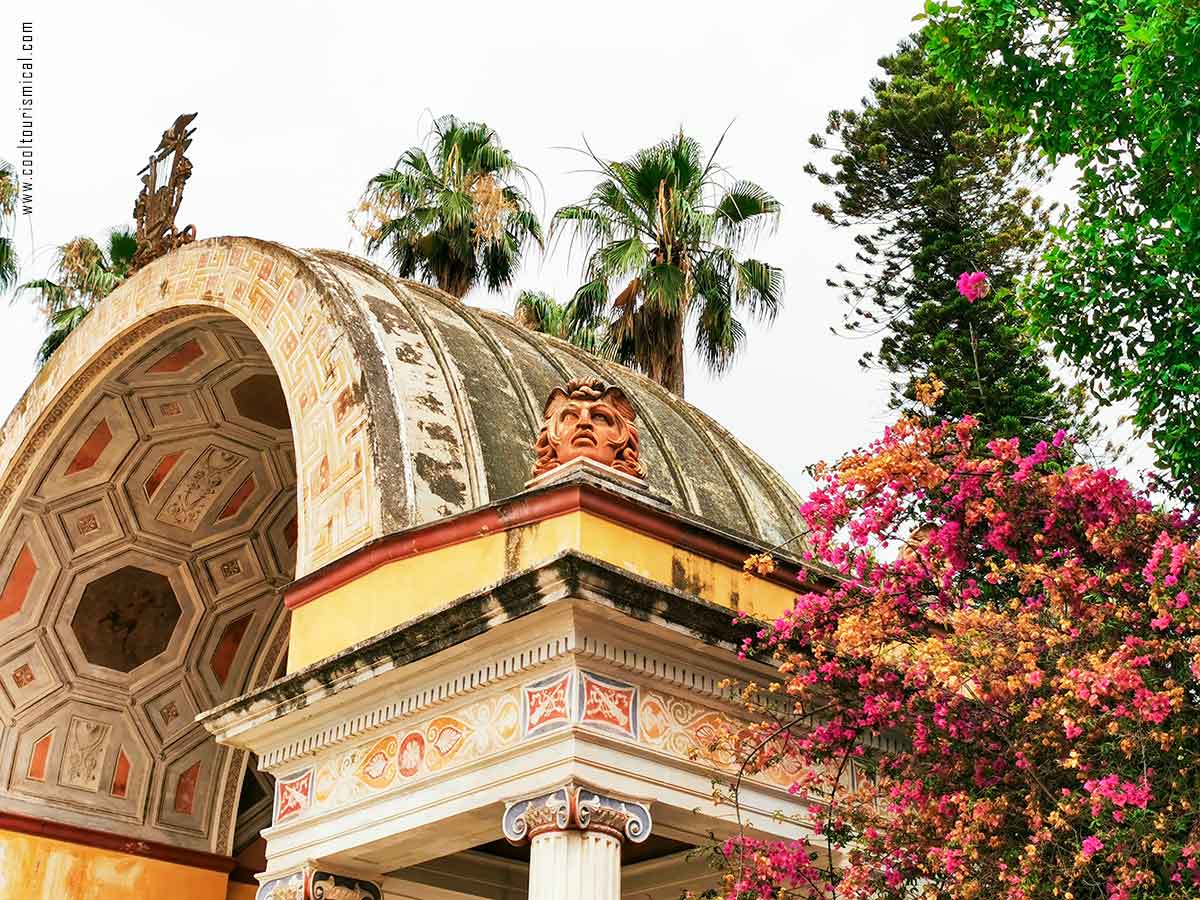
Villa Giulia, Neo Pompeian Decorations, Palermo, Copyright © Cooltourismical.com
Sicily
Sicily’s cultural heritage reflects a complex history influenced by multiple civilizations, from Greeks and Moors to Normans and Spaniards.
Its Greek legacy is mainly made of the Valley of the Temples in Agrigento and the ancient theaters in Syracuse and Taormina. The island’s Norman period is also significant, best exemplified in Palermo with its splendid churches and castles, exquisitely blending Norman, Arab, and Byzantine influences.
Read more: Best things to see in Palermo, Sicily.
Moreover, Sicily is renowned for its Baroque architecture, especially in cities like Noto, Modica, and Ragusa, where the style flourished after the devastating earthquake of 1693. These cities are part of the UNESCO-listed Late Baroque Towns of the Val di Noto, celebrated for their exceptional architecture and urban planning.
Sardinia
In contrast, Sardinia has less historical sites compared to Sicily. Still, the island gives you the chance to learn about the prehistoric life of a lesser-known, but equally fascinating culture: the Nuragic civilization. This civilization, unique to Sardinia, dates back to the Bronze Age. And the most emblematic Nuragic site is Su Nuraxi in Barumini, a UNESCO World Heritage site.
Winner for best cultural attractions: Sicily.
 Beaches
Beaches
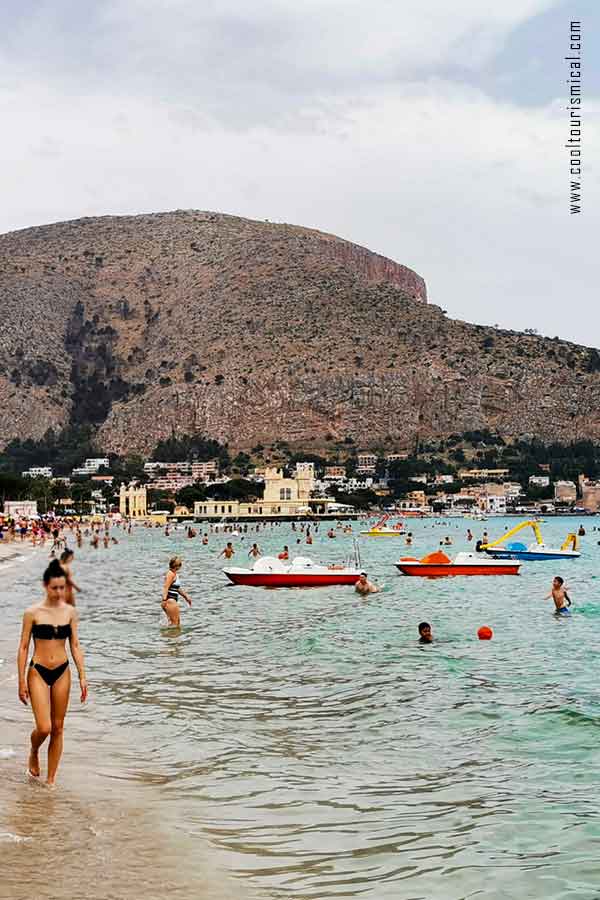
Mondello Beach, Palermo, Sicily, Copyright © Cooltourismical.com
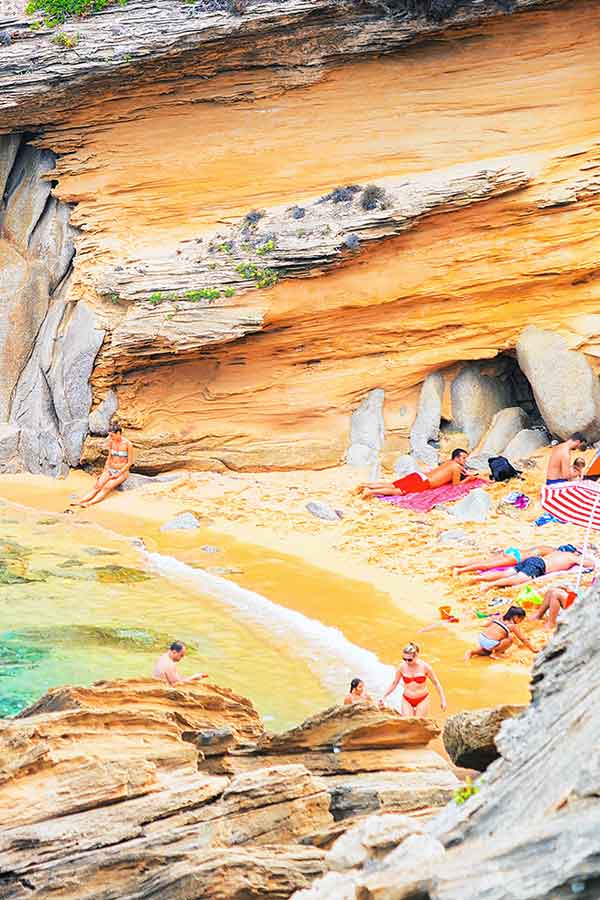
Santa Teresa di Gallura Beach, Sardinia, Source: Eyeem | Freepik
Sardinia
Sardinia’s beaches are such a true Mediterranean paradise. So peaceful, so beautiful, so unspoiled, so… almost perfect!
The island’s shores, like the famous Costa Smeralda, La Pelosa in Stintino, and Cala Goloritzé, have some of the clearest waters you can ever find. And an idyllic natural beauty setting. Waves in mesmerizing shades of blue and turquoise collide with some of the whitest sands. Sometimes, they dramatically surrounded by tall, lush, jaw-dropping mountainous cliffs. If you’re in for some snorkelling, windsurfing, canoeing, and other water sports, this is the place for a heavenly experience.
Plus, for those seeking luxury, certain areas of Sardinia, like the Costa Smeralda are synonyms with exclusive and high-end tourism, resorts, yachts.
Sicily
Even not as spectacular as the Sardinian ones, Sicily’s beaches bring their own unique charm to the table.
There are the sandy beaches of Cefalù and San Vito Lo Capo, the striking rocky coves of the Aegadian Islands and the extraordinary white cliffs of Scala dei Turchi. What makes these ones particularly special is their proximity to extraordinary historical sites. And the fact that you can easily combine a beach day with some cultural exploration. Plus, beaches like Mondello in Palermo are close to urban centers, blending the beach experience with the conveniences of city life.
Winner for best beaches: Sardinia.
 Landscapes
Landscapes
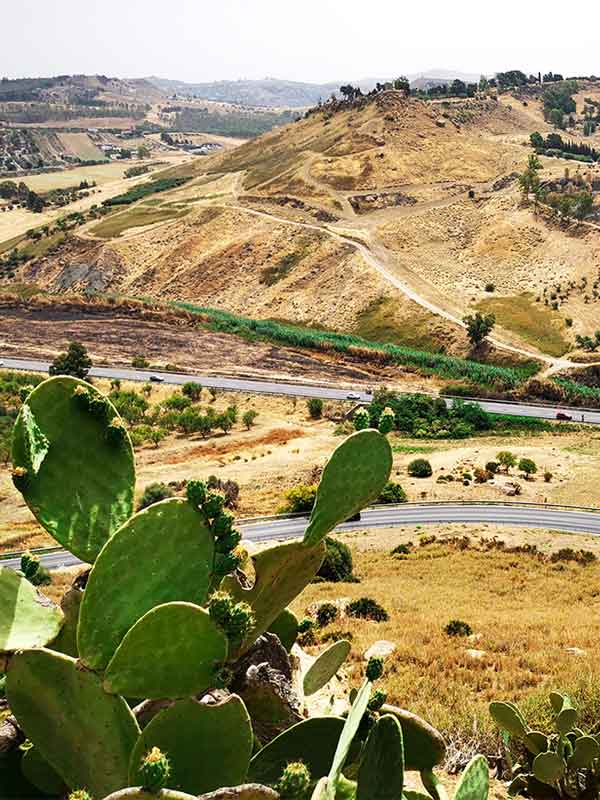
Sicilian countryside, Copyright © Cooltourismical.com
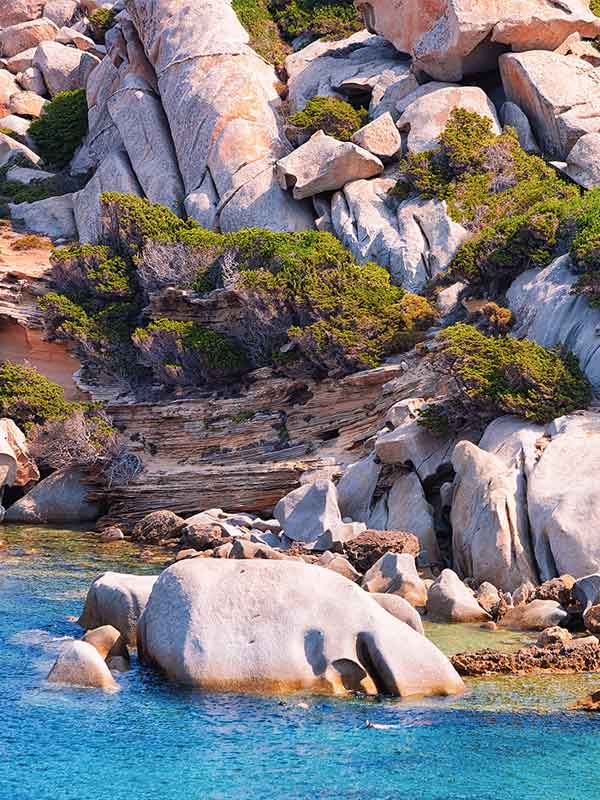
Sardinian coast, Source: Roman Babakin | Freepik
Sardinia
Sardinia boasts stunning coastal landscapes with crystal-clear waters, pristine beaches, and rugged cliffs. The Costa Smeralda is particularly famous for its emerald-colored sea.
But, inland, there are also plenty of mountains covered in forests, woodlands, and fertile valleys. The most famous is Gennargentu, a large massif and national park with stunning prairies coming up to life in spring. Therefore, Sardinia hides, not far from its beaches, a beautiful, pristine countryside and mysterious Nuragic complexes scattered here and there.
Added to all that, Sardinia’s lagoons and the endless flocks of pink flamingos are a true wonder.
Sicily
Sicily’s landscapes are marked by their volcanic grandeur. The imposing presence of Mount Etna, one of the world’s most active volcanoes, creates a dramatic and unique terrain. But, as Sardinia, the island has its own coastal areas, including sandy beaches and picturesque fishing villages.
Inland, Sicily’s well-known fertile plains and valleys, where citrus grow, hiding among vineyards and olive groves, all set against the backdrop of either volcanic slopes or rolling hills.
Plus, the island’s landscapes are dotted with historic cities like Palermo and Syracuse, blending multiple unique architectural styles and ancient ruins.
Winner for best landscapes: Sardinia.
 Cuisine
Cuisine
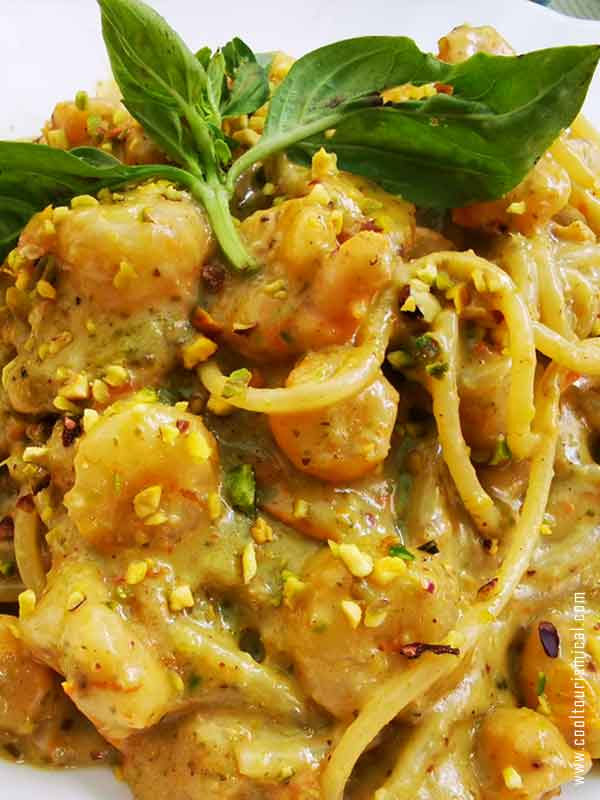
Sicilian asta with Mazara shrimps, Copyright © Cooltourismical.com
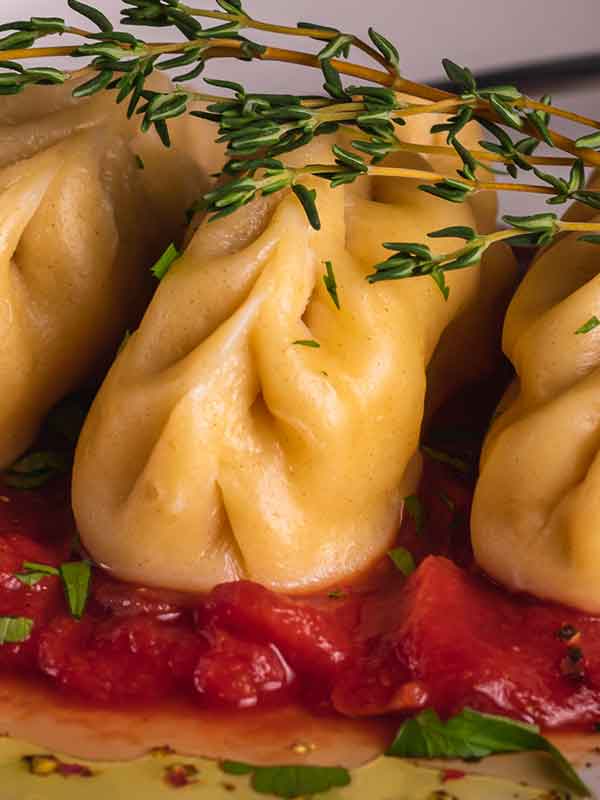
Culurgiones, Sardinian ravioli-like stuffed pasta, Source: Eyeem | Freepik
Sicily
Sicilian cuisine is known for being extremely bold and rich in terms of food flavors, heavily influenced by the same history of various conquerors including Greeks, Arabs, Normans.
Ingredients like olives, tomatoes, and citrus fruits are staples. Seafood is also a major component, given its location in the Mediterranean. And who hasn’t heard about the sweet cannoli? Yes, the tube-shaped shells of fried pastry dough with creamy ricotta filling. They come from here! As also does Modica chocolate.
Plus, Sicily, especially Palermo, has made the top of many famous lists for having some of the world’s best street food scenes. Arancini (fried rice balls), Pane e Panelle (chickpea fritters), Sfincione (Sicilian pizza), all heavenly. I already wrote a post about a selection of some really good restaurants in Palermo and another one about its ancient markets filled with fresh agricultural products and fresh fish.
If we stop to think, Sicily, it is actually an amazing place for vegetarians.
Sardinia
Compared to all that diversity of Sicilian food scene, Sardinian cuisine is more rustic and hearty, tasty nonetheless, and with a strong focus on pastoral ingredients. Meat at its core: roasted goat, lamb or suckling pig, along with eggs, sheep’s milk and cheese, like the famous Pecorino Sardo, wild herbs and decadent red wines. Pane Carasau, a crispy flatbread, and Culurgiones, a type of stuffed pasta, are also emblematic of Sardinian cuisine.
Mountains on the island have been a home to Sardinian people and cuisine was more adjusted to that kind of life.
Still, even if less prominent than in Sicily, good seafood can be found along the coast of Sardinia. Alghero, on the northwest coast, is famous for its lobsters, while Cagliari in the south is known for mussels and eels. Also, the Costa Smeralda and the whole Northeastern Coast are upscale areas where you can find great, high-quality seafood.
Winner for best street food, seafood & vegetarian options: Sicily.
 Accessibility & Transportation
Accessibility & Transportation
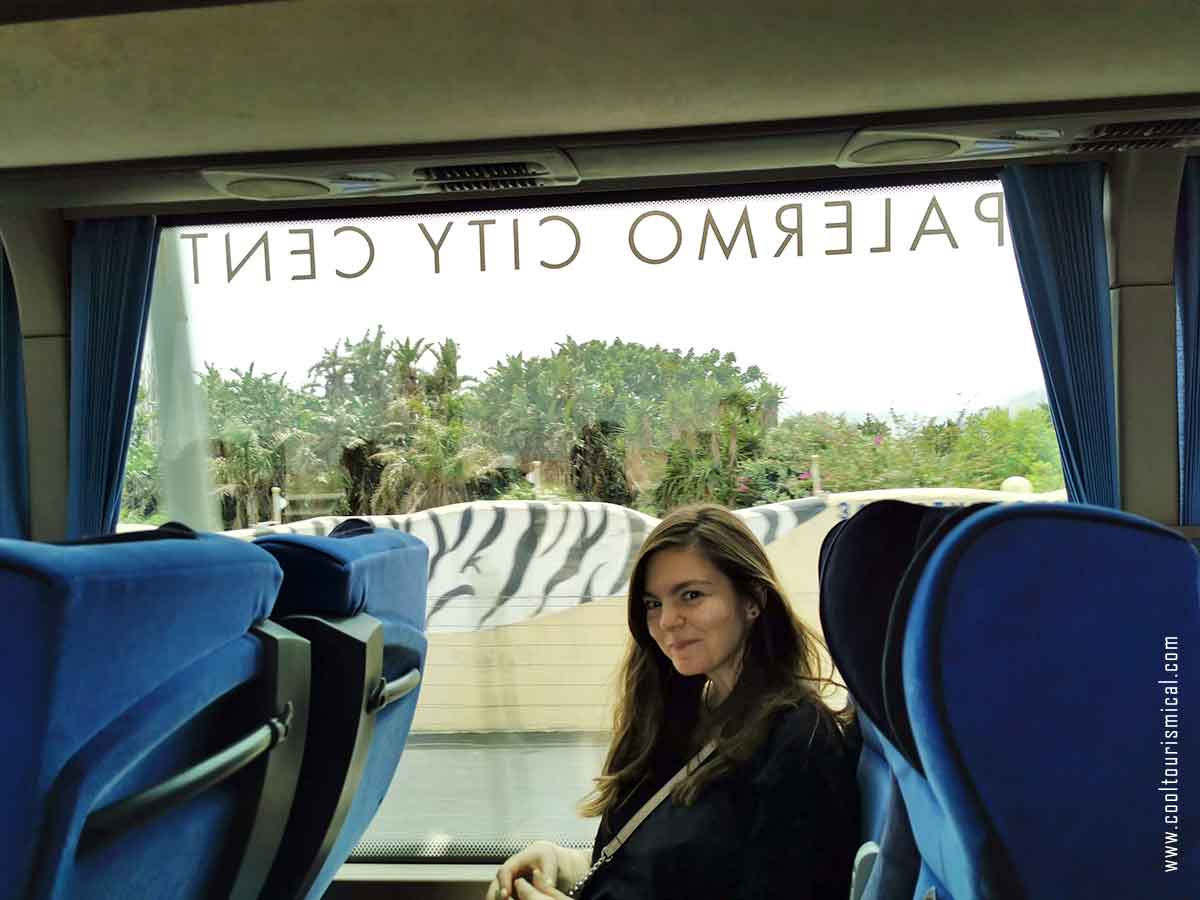
Bus connection from the Falcone Borcellino Airport to Palermo City Center, Copyright © Cooltourismical.com
Both Sicily and Sardinia are well-connected to the Italian mainland and each other by air and sea. Sicily has several airports, with the main ones being Palermo, Catania, and Trapani. This makes it relatively easy to reach from various parts of Italy and Europe. Sardinia is also served by three main airports: Cagliari, Olbia, and Alghero.
Sicily has a denser and more extensive road and rail network due to its larger size and population, making it generally easier to navigate, especially for longer distances. Sardinia, while also having good transport options, tends to have less dense infrastructure and slower connections, particularly for rail travel. Traveling between cities is much easier here with a rented car. Ferry travel is a popular option for those bringing vehicles to the island.
 Accommodation
Accommodation
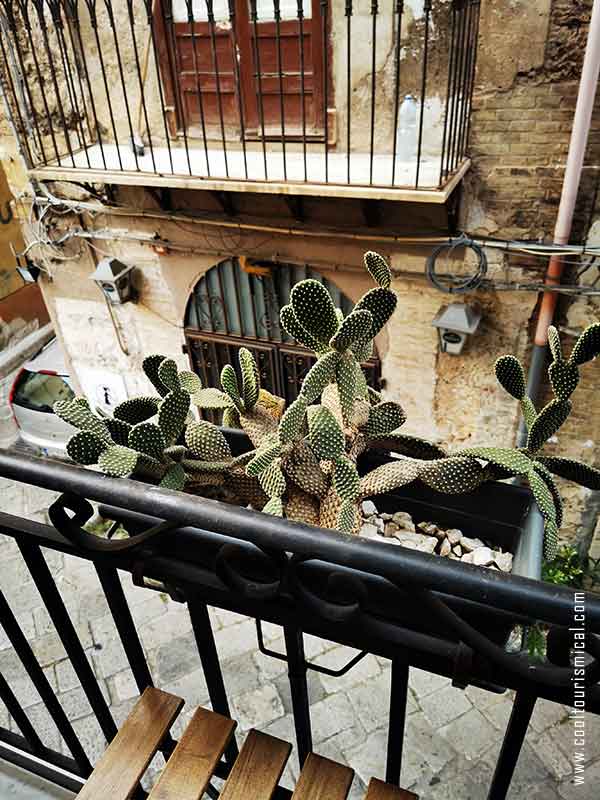
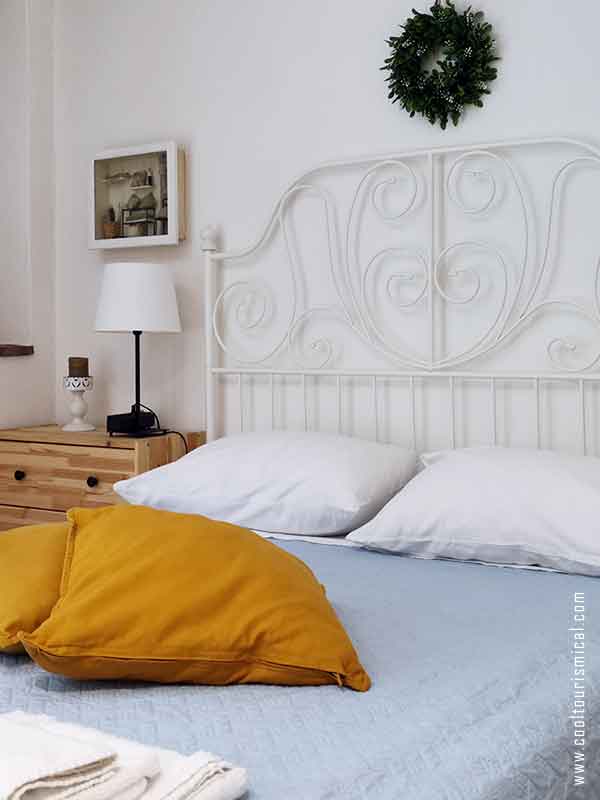
Palermo Studio in the Old Center, Copyright © Cooltourismical.com
In terms of accommodation, Sicily and Sardiia offer a distinct range of experiences, with Sicily being more budget-friendly and culturally diverse, while Sardinia is known for its exclusive resorts and stunning coastal accommodation options.
Sicily
Sicily offers more in terms of historic and culturally rich stays, especially urban ones. I am speaking about ancient palazzos and villas, particularly in cities like Palermo, Syracuse, and Taormina. As an example, in Palermo, you can get one room in one of the oldest palaces in the city, the 12th century Conte Federico, spend a few days in the residence of Prince de Lampedusa, or watch the Bay of Palermo from on of the elegant rooms of Villa Igiea, a restored Art Nouveau villa with extraordinary, lush gardens.
Still with a a historical flair, but a more budget-friendly option are the traditional studios in the old city centres. In Palermo, I chose this cute, little apartment, right in the centre and beautiful to the smallest detail: wall dioramas, stone window arcades with small seashells embedded, a cactus on the terrace, and a charming, metal-frame bed.
With so many rustic settlements, romantically surrounded by citrus and olive groves, dreamy vineyards and rolling hills, agritourism couldn’t be missing. If you love chocolate, you can go to Modica and also stay in the wonderfully restored ancient villa of Agriturismo Baglio Calanchi. Modica is literally filled with B&Bs and farmhouses. Other such lovely countryside places in Sicily are the 18th century nobiliary house, Monaci delle Terre Nere (Zafferana Etnea), or Antichi Granai (Calatafimi), near the ancient city of Segesta.
Sardinia
When compared to Sicily, Sardinia is all about a more serene and natural setting, with accommodation often nestled along pristine beaches or within charming coastal villages.
This is what makes it ideal for those seeking all-inclusive options, especially high-end beach resorts such as the ones in Costa Smeralda region. In the north of Sardinia, some of the best rated hotels offering world-class services are the lovely Romazzino, 7Pines Resort by Hyatt and Cervo: dreamy rooms, spas, private beaches, heaven-made gardens. To the South, in Cagliari, there is the superb Palazzo Doglio, an elegant urban sanctuary in the old center.
Agritourism is extremely popular, especially towards inland, and specifically in central areas, where urban life is almost missing.
There are plenty of wonderful and peaceful farm stays in the Sardinian countryside, surrounded by mountains, forests and natural reserves. Rustic farmhouses or charming cottages, some with pools, others with inhouse vineyards, are small pieces of paradise, just to lay back and relax. Some extremely lovely examples are Agriturismo Guthiddai (Oliena), Tenute Costadoria (Valle di Cynara) and Agriturismo Palas De Serra Country Resort. But the list is huge.
Winner for historic hotels: Sicily. | Winner for luxury hotels: Sardinia.
 Festivals and Events
Festivals and Events
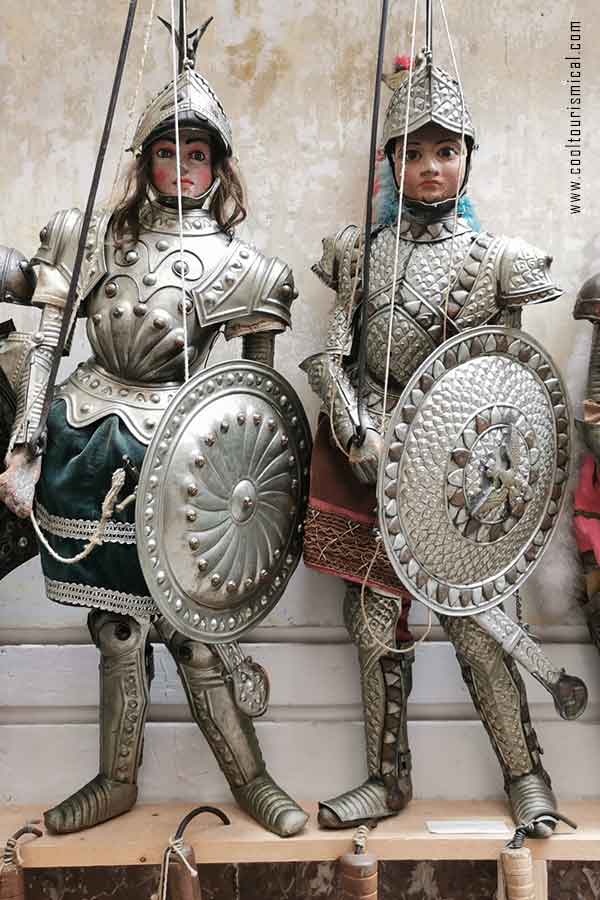
Teatro di pupi, Palermo, Sicily, Copyright © Cooltourismical.com
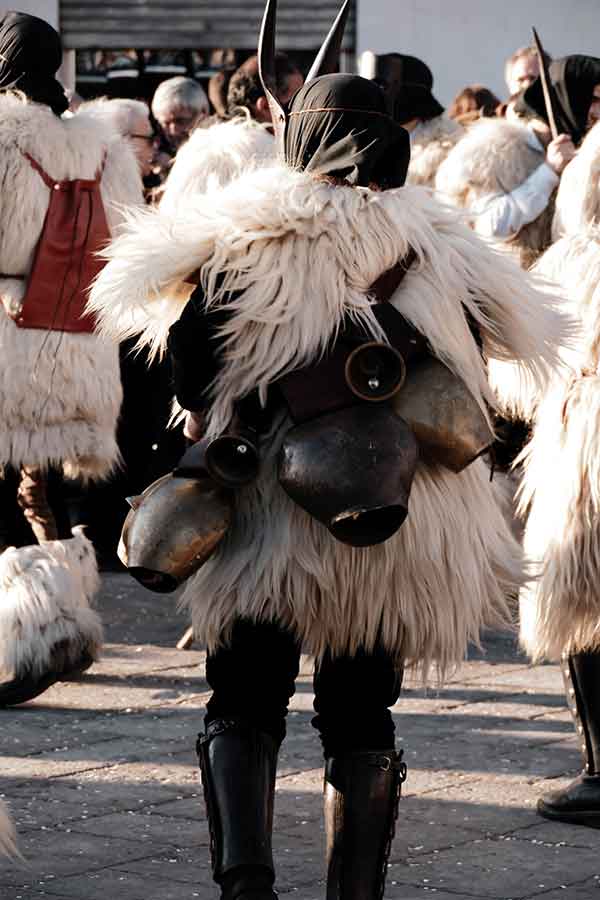
Sardinian Carnival, Cagliari, Source: Eyeem | Freepik
Sicily
Sicily has a calendar filled with beautiful religious festivals, such as the Feast of Saint Agatha in Catania and the Holy Week processions in various towns. These often combine religious devotion with joyful festivities including parades, music, and fireworks.
Moreover, the island celebrates its cultural heritage too. Greek theatre festival in Syracuse and the Taormina Arte festival are platforms for music, film, and art.
Given Sicily’s rich culinary tradition food, wine and seasonal harvests festivals are also common: Cous Cous Fest in San Vito Lo Capo, Choco-Modica near Ragusa, Almond Blossom Festival in Agrigento , Festival of wheat and bread in Catenanuova, Festival of Prickly Pear in Catania. And the list can go on.
Sardinia
In Sardinia, similarly to Sicily, deeply ingrained traditions come alive with festive celebrations. But here, folklore blends with traditions in a very unique way.
Events like the Sagra del Redentore in Nuoro and the Cavalcata Sarda in Sassari are remarkable for their display of traditional costumes, music, and horse parades.
Added to those, some quite interesting cultural events deepen the connection with the island’s rich heritage. One notable example is the Sa Sartiglia, an annual event in Oristano, which stands as one of the oldest and most remarkable horse races in the Mediterranean. Additionally, there’s the intriguing historical-religious re-enactment called the Corsa degli Scalzi in Cabras, a traditional race where participants run barefoot, serving as a reminder of the 17th century Moors invasion.
Sardinia also blends religious traditions with local folklore in events like the Time in Jazz festival in Berchidda and the Festa di Sant’Efisio in Cagliari, where religious ceremonies are accompanied by folk music and dancing.
Winner for best food festivals: Sicily. | Winner for authentic folklore: Sardinia.
 Why Would I Go to Sicily and Not Sardinia?
Why Would I Go to Sicily and Not Sardinia?
Choosing Sicily over Sardinia for a vacation is a promise that you are going all-in for pure Italian energy and buzz: first step on the tiny cobblestone streets and it’s like being irresistibly pulled into an overwhelming embrace of Italians’ spirit and culture.
First of all, taking this trip certainly means you’re ready for one of the most mouth-watering culinary experiences of your life. Ancient markets are filled with fresh, gigantic fruits and vegetables, all kinds of straight from the ocean fish, and worldwide known street food, such as the deep-fried arancini and that unforgettable, creamy ricotta-filled cannoli.
Secondly, you must be in love with ancient architecture! Cities like Palermo, Syracuse, and Agrigento couldn’t be more famous for their artefacts and historical sites: Greek temples, Roman villas, Norman cathedrals, and Baroque palaces.
Yes, palaces, you got that right! Some of the most amazing! And with an amazing backdrop too. From the dramatic Mount Etna to lush vineyards and scenic coastlines, you will always something to do and see in Sicily. When you’re not shopping, eating, or visiting, you can soak up the sun on one of the beautiful beaches in Palermo or Cefalu.
Compared to Sardinia, Sicily is definitely a more budget-friendly destination in terms of accommodation and dining. And it is also more accessible to international tourists due to bigger airports and better connection to mainland Italy.
📌 Things You Can Only Find in Sicily
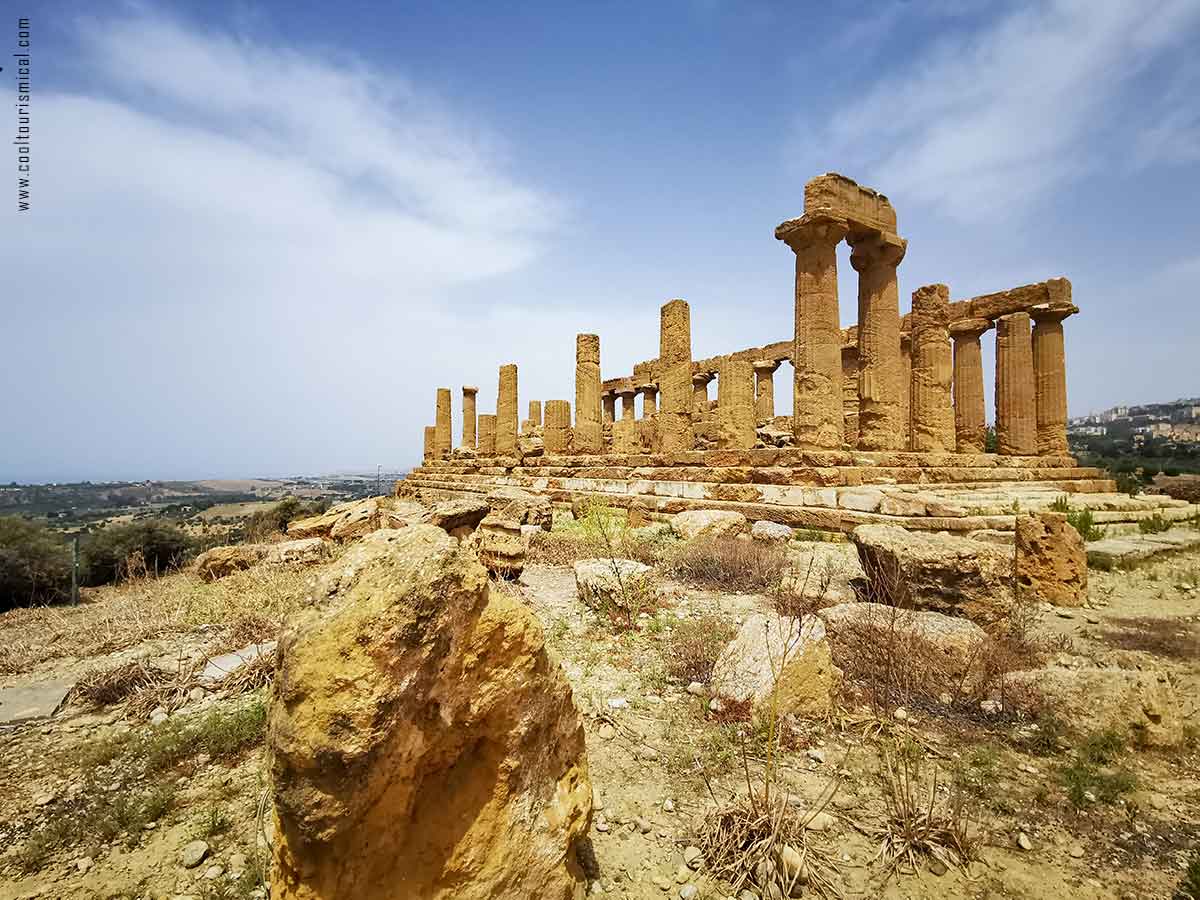
Valley of the Temples, Agrigento, Sicily, Copyright © Cooltourismical.com
- Most amazing examples of Arab-Norman architecture: Norman Palace in Palermo and the Cathedral in Monreale are just two of the many examples.
- Baroque Cities of the Val di Noto: a series fo cities part of UNESCO World Heritage and famous for their exceptional Baroque architecture.
- Mount Etna: Europe’s highest and most active volcano, Mount Etna is a UNESCO World Heritage Site and a symbol of Sicily. And a great place for hiking.
- Valley of the Temples: Located in Agrigento, this is one of the most outstanding examples of Greater Greece art and architecture, featuring well-preserved ancient Greek temples.
- Teatro Antico di Taormina: An ancient Greco-Roman theater in Taormina, not only historically significant but also offering breathtaking views of the Ionian Sea and Mount Etna.
- Sicilian Puppet Theater (Opera dei Pupi): A traditional marionette theater, which is an integral part of the island’s cultural heritage and recognized by UNESCO.
- Cannoli: While available elsewhere now, cannoli are originally Sicilian and are a staple of Sicilian cuisine, with their crispy shells and sweet ricotta filling.
- Caltagirone Ceramics: The town of Caltagirone is famous for its majolica tiles. And it’s impossible to not have already heard about the colourful Teste di Moro or Moor’s Heads and luck-bringing pine cones, “Pigna”.
- Home of AddioPizzo: a movement of local businesses and consumers who refuse to pay Mafia extortion money.
- “The Godfather” filming locations.
📌 On Ceramics and other things to bring home from Sicily: Palermo souvenirs.
 Why would I go to Sardinia and not Sicily?
Why would I go to Sardinia and not Sicily?
If you’d rather pick Sardinia instead of Sicily, then you’re in for a holiday filled with beach life, homemade foods, hiking, and tranquility, rather than the sightseeing, street food, and nightlife that Sicily offers.
Generally, Sardinia is less crowded and offers a quieter and more laid-back vacation experience: breathtaking beaches and luxury hotels, like those in Costa Smeralda and La Pelosa, crystal-clear waters and fine sand, and unspoiled natural countryside. Plus, even if it is less dense in historical sites, Sardinia has also a unique Nuragic civilization heritage with intriguing ancient ruins and traditions.
Still, the Mediterranean island remains a hotspot for relaxation, water sports, sailing, and other outdoor adventures due to its extensive coastline and rugged interior landscapes. The mountains of Sardinia are covered in forests, hiding weaving hiking trails and an underground world with more than 300 mysterious caves like the famous Neptune’s Grotto. In just a few words, it is ideal for nature enthusiasts!
If you’re choosing Sardinia and want to eat the traditional style, you must keep in mind you will find meat based foods like Porceddu (suckling pig) or seafood specialties. Not too many vegetarian options.
But if you’re looking for an upscale, exclusive holiday, then Sardinia is a top choice.
📌 Things You Can Only Find in Sardinia
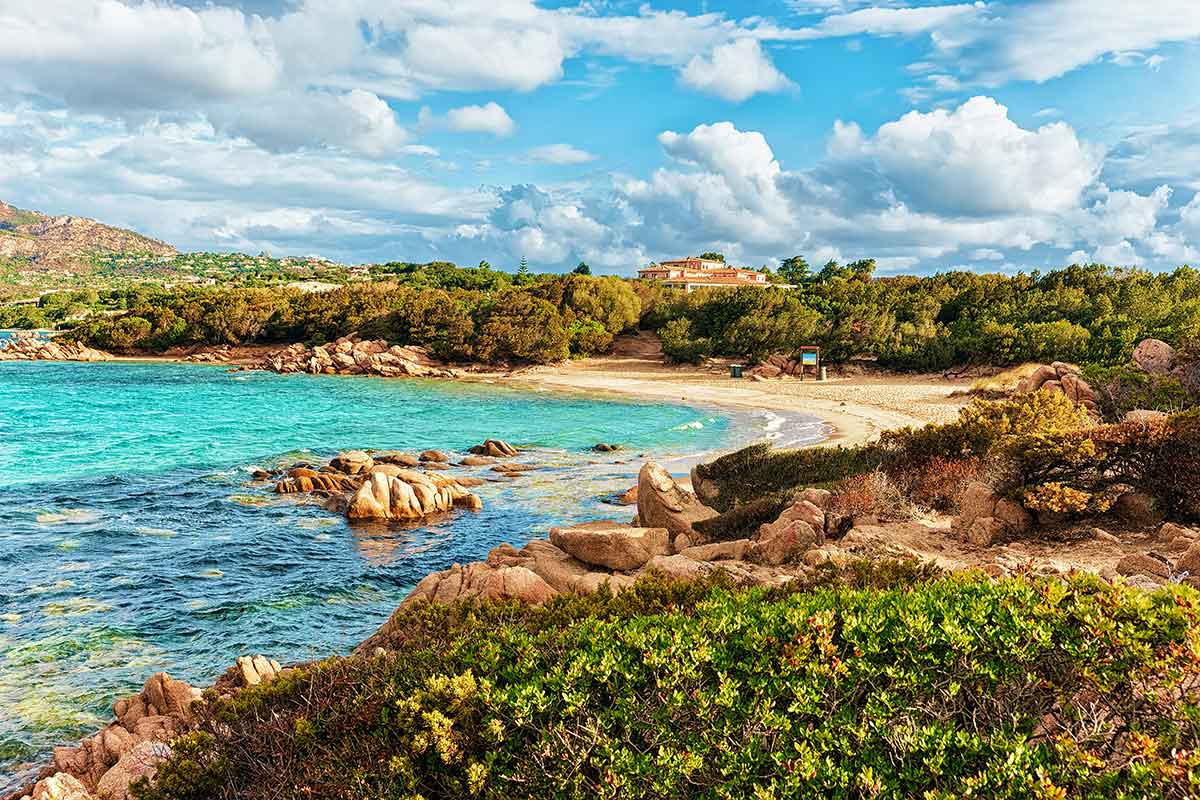
Capriccioli Beach, Costa Smeralda, Source: Roman Babakin | Freepik
- Nuragic Complexes: Sardinia is home to unique Bronze Age stone structures called “Nuraghi.” The most famous is Su Nuraxi in Barumini, a UNESCO World Heritage site. These megalithic edifices are unique to Sardinia and are not found in Sicily or elsewhere.
- Costa Smeralda: This is an exclusive stretch of coastline known for its luxury resorts, upscale dining, and celebrity sightings. It’s a hub of luxury that Sicily doesn’t match in the same way.
- Tavolara Island: This small, remarkable island off the northeast coast of Sardinia is known for its dramatic cliffs and the claim of being the smallest kingdom in the world, a quirky and unique story.
- Asinara National Park: A natural reserve located on Asinara Island, known for its wild albino donkeys and a former high-security prison, now a unique tourist attraction.
- Cannonau Wine: Sardinia is famous for its Cannonau wine, a type of Grenache that is said to contribute to the longevity of the island’s inhabitants. “Cannonau wine has two to three times the level of artery-scrubbing flavonoids as other wines.” ( Aislinn Kotifani, Longevity Link: How Wine Helps You Live Longer)
- Largest cork oak forests in Italy, while the island is one of the largest producers of cork in the world.
- Sardinian Folk Music and Dance: Unique forms of traditional music, like the Cantu a Tenore, a style of polyphonic folk singing, and traditional dances like the Ballu Tundu, distinct to Sardinian culture.
- Maddalena archipelago: could easily pass as the most beautiful islands in the world. Unbelievably clear turquoise waters, amazing beaches.
 In Conclusion, What is Better, Sicily or Sardinia?
In Conclusion, What is Better, Sicily or Sardinia?
My winner for a first trip to Italy’s lovely islands was Sicily. Mostly because of the abundance of cultural landmarks, the furious Etna mountain and the so famous street food. What I search for in a holiday is not necessarily to relax, but to live at a maximum all the little and deepest moments of a society. As I am not too much of a beach goer, but a day at the beach is not bad either, Sicily won.
However:
- For History and Culture, Sicily has a richer historical and cultural scene.
- For Beaches and Nature, Sardinia might edge out with its pristine beaches and unspoiled landscapes.
- In terms of Cuisine: Both offer unique culinary experiences, but Sicily is more diverse.
- For Atmosphere: Sicily is vibrant and lively, while Sardinia offers a more tranquil experience.
- Depending on the budget: Sicily is more accessible as prices, while Sardinia can be the high-end choice for a holiday.
 Choosing Both? From Sicily to Sardinia
Choosing Both? From Sicily to Sardinia
Palermo
Cagliari
If you’re planning a combination of Sicily and Sardinia, I do recommend considering a minimum of 10 to 14 days. That means, 6-8 days for Sicily and 4-6 days for Sardinia.
Moreover, you can move from one to another either by air or by sea.
The quickest way to travel between Sicily and Sardinia is by flying. Both islands have major airports (like Palermo and Catania in Sicily, and Cagliari, Olbia, and Alghero in Sardinia) with direct flights connecting them. The flight duration is typically around 1 to 1.5 hours.
Another option is to take a ferry. This is a slower but more scenic route. There are no direct ferry routes between Sicily and Sardinia, so you’ll need to travel via the Italian mainland. The common route is to take a ferry from Sicily to mainland Italy (from ports like Palermo or Messina to Naples or Civitavecchia) and then another ferry from the mainland to Sardinia (from ports like Naples, Civitavecchia, or Livorno to Cagliari, Olbia, or Porto Torres). It might take you a full day doing all that. But some ferries do offer cabins for overnight journeys and usually have facilities like restaurants and lounges.
Ready for the next adventure in Italy?

